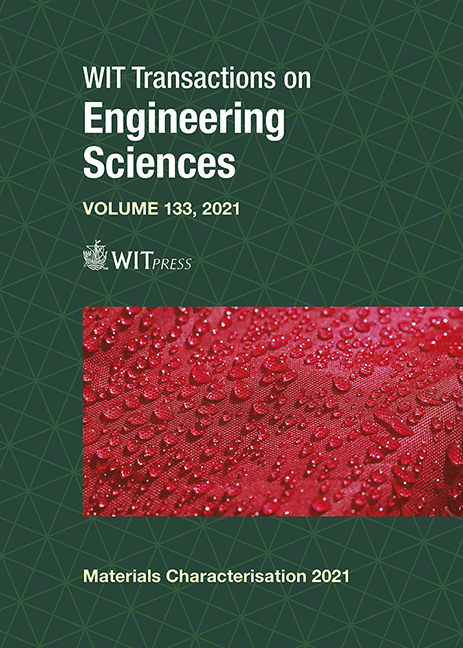TOWARD UNDERSTANDING LARGE DEFLECTION BENDING OF 3D PRINTED NINJAFLEX®
Price
Free (open access)
Transaction
Volume
133
Pages
11
Page Range
55 - 65
Published
2021
Paper DOI
10.2495/MC210061
Copyright
Author(s)
LUCAS K. GALLUP, MOHAMED TRABIA, BRENDAN O’TOOLE, YOUSSEF FAHMY
Abstract
NinjaFlex® is a thermoplastic polyurethane filament that is primarily used for 3D printing. Aside from its low cost and availability, this material is highly flexible, durable, and has a low coefficient of friction. While NinjaFlex® was introduced approximately two decades ago, a comprehensive understanding of the filament’s mechanical behavior, especially in the context of the effect of 3D printing, is still lacking. The goal of this research is to gain a better understanding of the behavior of 3D printed NinjaFlex® specimens when subjected to bending loads that cause large deflection. A series of experiments were conducted to test the bending of 3D printed dog-bone specimens with different rectangular cross sections and lengths. A total of 81 specimens were tested. Test fixtures were specifically designed for this goal. Camera and image processing techniques were used to measure the deflection of the specimens. The results indicate that the experimental setup achieved its goals with specimens experiencing a maximum deflection of about 33% of the specimen length. Assessment of the experimental results showed that specimens of the same dimensions and printed under the same conditions exhibit similar deflection. Experimental data are compared to a modified form of the Euler-Bernoulli beam theory. The results of this research will lead to a better understanding of the behavior 3D-printed thermoplastic polyurethane when it undergoes large deformation in bending and to better design 3D printed components.
Keywords
NinjaFlex, polyurethane, nonlinear material, large deflection bending, 3D printing





